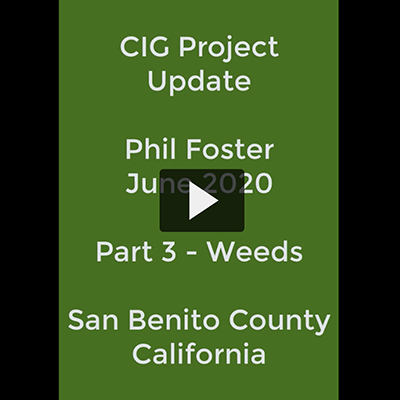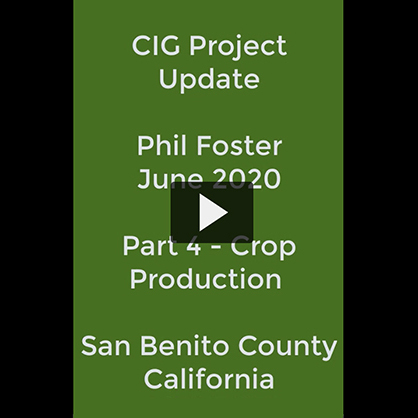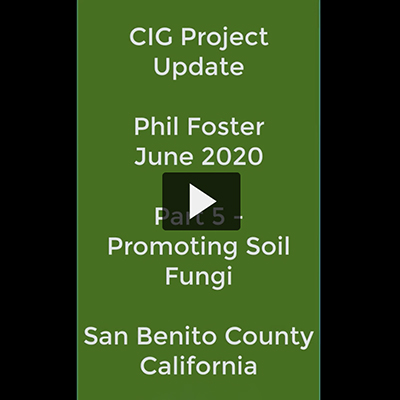
Phil Foster
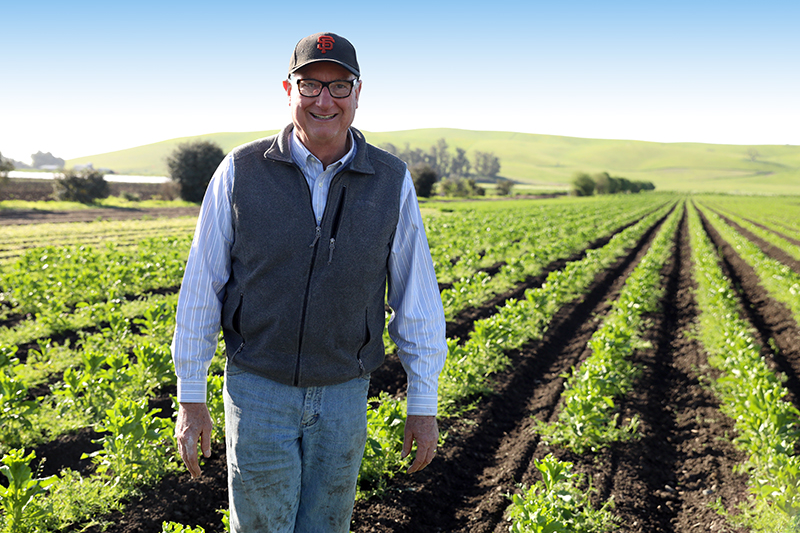
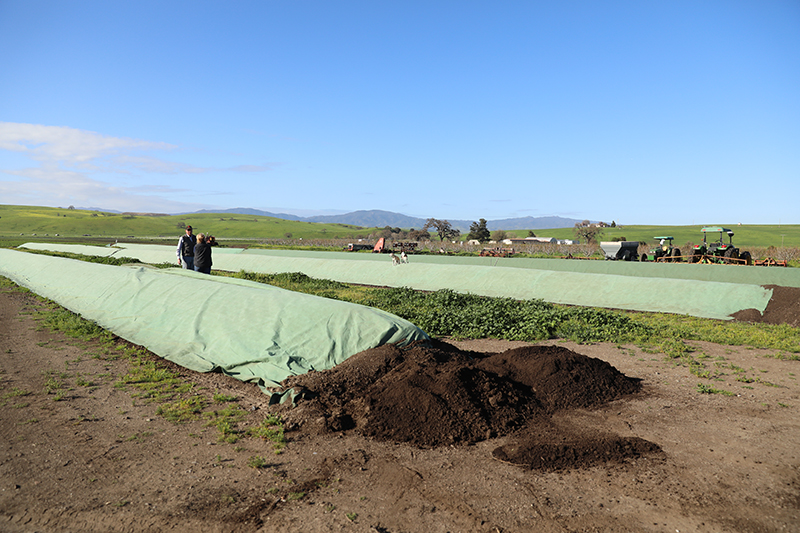
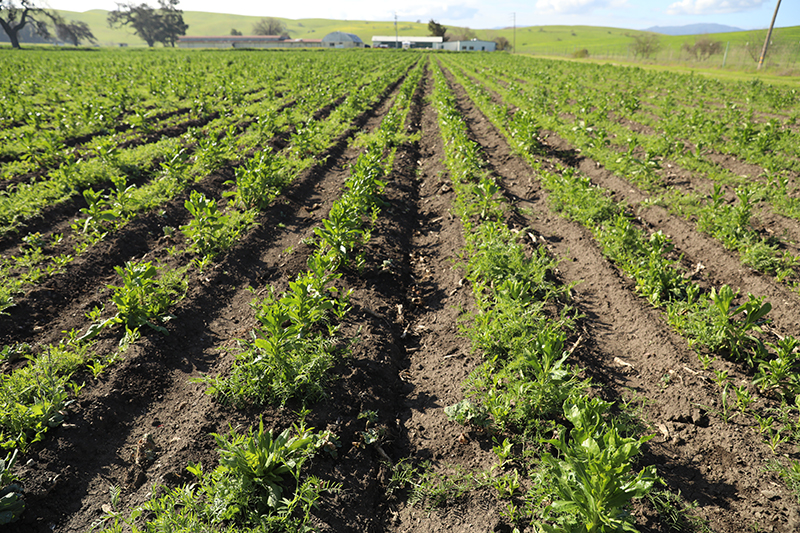
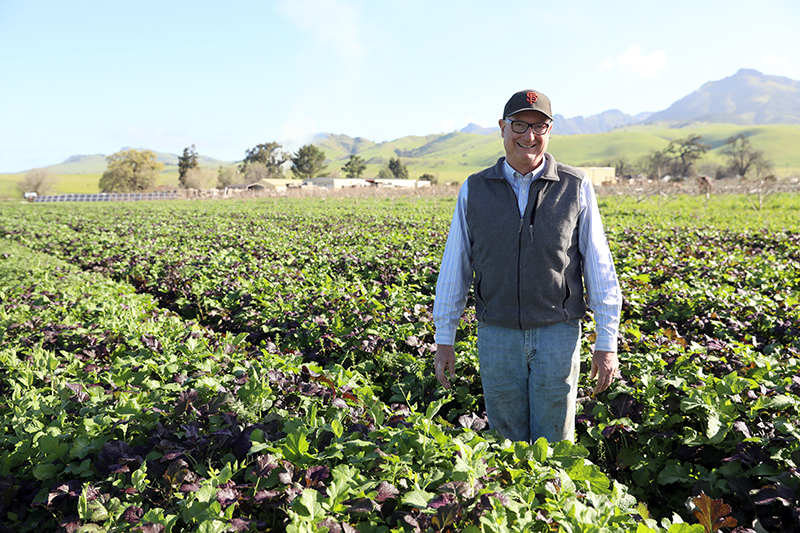
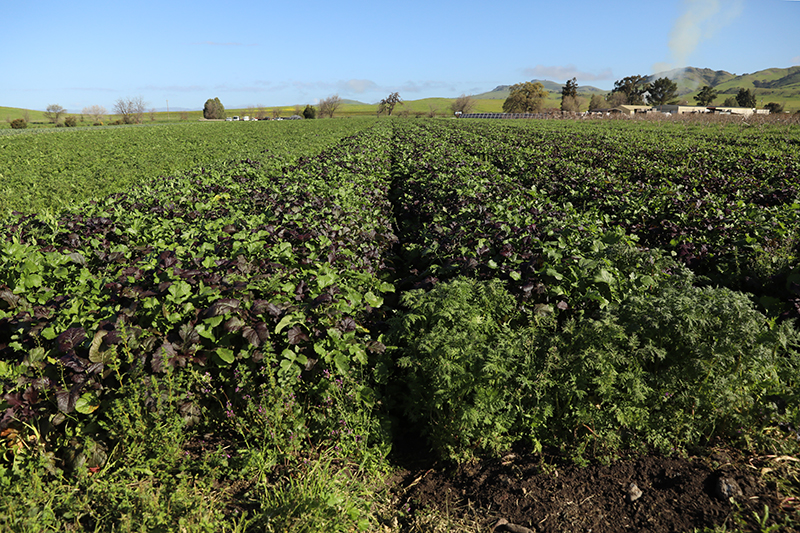
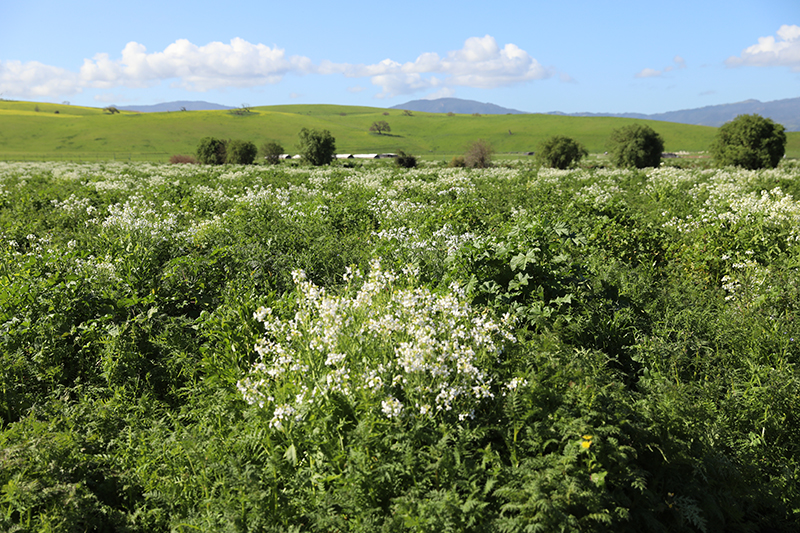
Phil Foster, through Pinnacle Organically Grown Produce, operates two ranches near San Juan Bautista and Hollister, California with his wife Katherine. They grow an average of 60 certified organic vegetables, melons and fruit a year on more than 250 acres, mostly cool season crops in San Juan Bautista and hot season crops in Hollister. The farm started out conventionally but Foster started experimenting with growing a few acres organically in 1989 and eventually moved into completely organic production because it proved to be a wise economic move. Now he is participating in the NRCS Conservation Innovation Grant (CIG) program to experiment with taking his operation into a regenerative agriculture future.
One of the goals of his CIG project is to come up with strategies to reduce tillage on the ranches. Specifically, they would like to cut back by 50% by going several crop cycles without doing primary tillage and see if they can still maintain high yields. It’s also about learning best practices for converting a farm from conventional tillage to these techniques successfully. The field will be tested to see what happens to the microbial balance and organic matter in the soil.
Foster says he was fortunate that when he started his ranch in the late 1980s, they had 2 - 3.5% organic matter already. With the use of cover cropping and composting, they were able to elevate the organic matter to between 3.5 - 6% over a 10-12 year period. However, for the last 15 years they have been plateaued at the same level so they are using the CIG project money to find out if reducing tillage will improve the soil even further. They’re hoping that if they disturb the soil less they will see increased organic matter and increased and more diverse microbiology. That would make more nutrition available to the plants, and they’re expecting to be able to cut back on off-farm inputs. They already have been able to cut back on some of what they use. Not only that, Foster is looking forward to finding out if there will be higher nutrient density in the produce they’re producing as well.
A Variety of Regenerative Techniques
Phil Foster uses a combination of compost, cover cropping, crop rotation, low till machinery, and the planting of companion plants and hedgerows to encourage beneficial insects and pollinators.
Compost is so important to Foster’s philosophy of farming that he has dedicated 4 acres of his Santa Ana ranch just for producing it. It is managed, turned, aerobic compost made in covered windrows. They’ve produced as much as 2500 tons of compost a year, but have now cut back to about 1600 tons. It’s all used on their two ranches. The materials are feedstock and culled vegetable residue, dairy, horse and duck manure, and sometimes wheat stock or hay. When they make compost in the summer it takes about 18 weeks to get to a finished state. They use equipment to turn the windrows and spray them at the same time with water from an underground pipeline with a drag hose attached to the turner. It takes just 20 minutes to turn and water so it’s a pretty efficient process.
Cover crops are also essential. In one field, for example, they grow carrots and brassicas like broccoli, cabbage, cauliflower, and kale then use a cover crop of spineless safflower and vetch. Very little work is needed to get the cover crop planted. Typically, they leave the old beds established and plant on top, sometimes using a light rotary harrow that works the ground to make a seedbed, sometimes just leaving it the way it is. They use a single line planter to plant their cover crops. In this field they often use Lana Vetch and Safflower. Lana Vetch was chosen for nitrogen production. Safflower was chosen for its deep taproot that will open up the soil and pull nutrients up from deeper down. Also, when a farm is not using conventional tillage, you need plants like Safflower that will accomplish the same thing without disrupting the soil biology. They do cultivate a bit because of the need for weed control in organic farming. But after the cover crop gets going it grows quite quickly. A field will be completely covered in Vetch in just about a month. Then that provides the needed weed control.
Phil Foster’s fields are kept covered as much as possible. Within four days of harvesting one crop, a cover crop is planted. The reduced tillage is really instrumental in being able to do that. In the past, Foster says they would need to take the time to work up a field, disk it, and then get it ready to plant again in conventional ways. But now they can turn a field around with cover crop seed in the ground in less than a week. Foster says “this was quite a revelation” to him. In the past in the winter, using a tractor, the soil would be compacted and they couldn’t do anything. But using a cover crop treats the land better and allows you to plant more crops in sequence without tillage.
Another technique he uses is to grow hedgerows of shrubs for building and maintaining a beneficial insect population. The idea is to have different bloom throughout the year so there is habitat for the beneficial species to survive at a low level so when pest problems involving aphids or thrips start to occur, the beneficial insects will help control them. He also grows flowering plants like alyssum, coriander, and white dill close in to the cash crops for the same reasons. They attract native pollinators, and even if they have to bring bees in to the farm, those bees also benefit from the flowers. Foster likes that they add a little more beauty and interest to the farm, and once established the hedgerows serve as a bit of a windbreak as well.
Machinery that Aids in the Process
Foster is working to reduce his tillage but, because there is still some minimal tillage to do, he uses special equipment modified to do the job. If he has a cover crop that he’s mowed and he wants to chop it up in order to make a seed bed, for example, he uses a vertical tillage tool to get the job done. It features a series of 20’ coulters, spaced 6 2/3” apart that fits his 40” and 80” bed spacing. If they find too much compaction in the soil, the machinery has chisels they can set up to loosen those areas. It also has another series of wavy coulters designed to chop and press the residue into the soil. The machinery works the compost a little bit into the top layer of soil.
Foster also uses a Yetter Strip Tiller. He uses it to open up a pocket in a mowed cover crop field so he can more easily plant. In the front is a coulter, then a residue manager, a place where they can add a light chisel to loosen the ground up, some disks to throw the soil back, and a basket in the back to help make the seed bed. He has two of these–one for 80” bed tops and another for 40” beds.
Challenges He’s Had to Overcome and Advice to Other Farmers
The challenges Phil Foster focuses on are fertility, weed control, pest control, quality, and finding the right varieties to plant. He says that sometimes what seems like it will be hard isn’t. Other times unexpected complications and difficulties can occur and that leads to more innovation.
For example, in a bed planned for melons, Foster intends to mow it, strip till it, and then plant in the area that was strip tilled. But it turns out that the type of cover crop used before that is important because melons in his region are prone to verticillium wilt. He is now using a cover crop of Caliente Mustard (a mix of different mustards), Field Peas for a nitrogen source, and Phacelia by broadcasting seeds on top of the beds with a brillion drill and using a plate planter to add lines of peas in the middle. He chose the mustard mix to counter the verticillium. It’s still an experiment but he was pleased with the success of his melons grown on top of this mix of cover crops last year.
Now that he’s been using cover crops successfully, the hope is to go at least a couple crop cycles without doing primary tillage on the soil in this field at all. He’ll do another winter cover crop after the melons are harvested and plant tomatoes in the same bed next year. After that, another cover crop and then lettuces. He hopes not to use a spader or a disk tiller for several seasons if all goes well.
“With any new technique that you’re using, there are things to learn,” Foster advises other farmers. “We don’t want to see a large drop-off in yield or production, but we know that we may have something in the first year or two.”
Foster speaks cautiously because he says his farm has been modestly successful with vegetable production using conventional tillage practices. While he would certainly love to see dramatic changes, and has already seen lowered input and time costs, he keeps level expectations, explaining that at this point they’re going to see if reduced tillage practices allow them to at least maintain the production they’re used to.
A lot of the techniques Foster is now using are quite different than what they did before. He says, “Each year we are gathering a little more knowledge and have a higher comfort level on how to manage the systems this way.” Some early tries had less than optimum results in several fields but, by taking the time to learn as they go along, later plantings have since been successful.
Future Plans
Foster has several focuses for experimentation on his farm. He says that bit by bit they’ve been cutting out primary tillage, discing and chiseling which is quite disruptive to the soil biology. Now he wants to know what the production will be like if he eliminates tillage for several crop cycles, and what plants are best to follow other crops in crop rotation. The current project is for 2-3 years. He thinks that one thing they may learn is that is too short a timeframe to really know for sure. Or they may see dramatic results. On their ranch they have seen good organic matter increases and they’ve seen some successful practices, but now they want to see if they can take it further. They want to have living plants and living roots for a higher proportion of the year. They also planning to experiment with innoculating their seeds with vermicompost and compost tea to see what effect that has.
Visit Pinnacle Organic: http://www.pinnacleorganic.com/index.html



